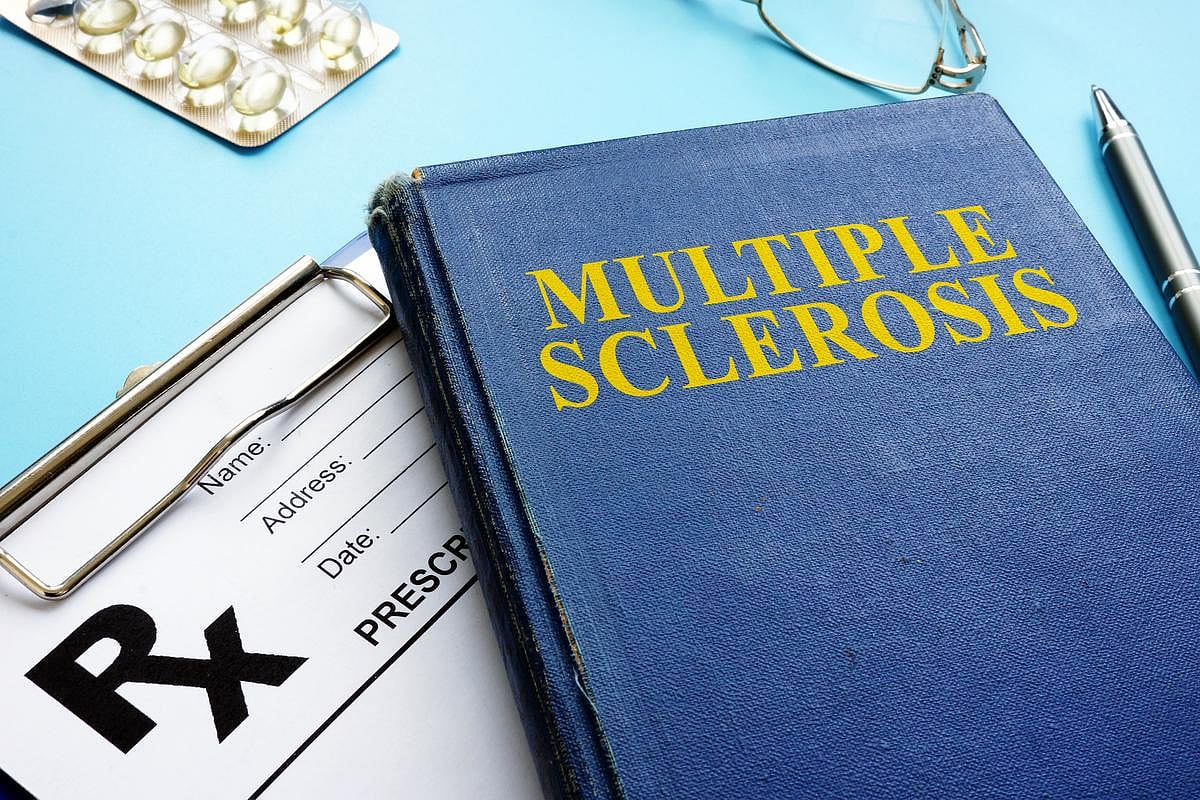Get Healthy!
Staying informed is also a great way to stay healthy. Keep up-to-date with all the latest health news here.
14 Jan
Study: Chronic Illness Raises Risk of Botox Side Effects
UK researchers report higher complication rates from cosmetic Botox injections among patients with chronic conditions like type 1 diabetes and thyroid disease.
13 Jan
Having This Many Children May Lead to Faster Biological Aging
New research finds family size and pregnancy timing may impact how well a woman ages and how long she lives.
12 Jan
Why Some UTIs Won’t Go Away — Even After Treatment
A new case study suggests bacteria hidden deep in the bladder lining may be causing chronic urinary tract infections in women and girls.
Burn Pits Loaded Veterans' Lungs With Carbon, Study Says
Exposure to open-air burn pits during post-9/11 military conflicts in Iraq and Afghanistan likely caused lung damage in some U.S. veterans, a new study says.
Veterans with deployment-related lung disease had higher levels of carbon-based particles in their lungs compared to healthy controls, researchers recently wrote in the journal Sc...
- Dennis Thompson HealthDay Reporter
- |
- January 15, 2026
- |
- Full Page
Can Teens Use Social Media Too Little For Their Own Good? Maybe, Study Says
There appears to be a “Goldilocks zone” when it comes to social media use among teenagers.
Too much social media use can negatively affect a teenager’s well-being, a new study finds, dovetailing with results of previous research.
But too little social media use also can have a bad impact on well-being, researchers r...
- Dennis Thompson HealthDay Reporter
- |
- January 15, 2026
- |
- Full Page
Genetics, Virus Play Key Roles In MS, Studies Suggest
Genetics appear to help determine who develops multiple sclerosis (MS), a pair of new studies says.
A person’s genetics interact with an infection with Epstein-Barr virus (EBV) to cause a severe autoimmune reaction that leads to multiple sclerosis, researchers reported this week in the journal Cell.
“In addition ...
- Dennis Thompson HealthDay Reporter
- |
- January 15, 2026
- |
- Full Page
Depression Might Signal Brain Disease Risk Among Seniors
Depression in old age could be an early sign of serious brain disease, a new study says.
Depression occurs more often and earlier in seniors who go on to develop Parkinson’s disease or Lewy body dementia, researchers recently reported in the journal General Psychiatry.
The risk of depression rises steadily in these fol...
- Dennis Thompson HealthDay Reporter
- |
- January 15, 2026
- |
- Full Page
Elevated Blood Pressure Increases Pregnancy Risks, Study Finds
Managing an expecting mother’s blood pressure could improve her odds of an overall healthy pregnancy, a new study says.
Just a 10-point increase in a pregnant woman’s systolic blood pressure — the top number in a blood pressure reading — is linked to an increased risk of many serious complications affecting both mot...
- Dennis Thompson HealthDay Reporter
- |
- January 15, 2026
- |
- Full Page
This Device Might Help Seniors Avoid Dementia, Study Finds
Some seniors are loathe to don a hearing aid, worried that the devices will be a hassle or make them look old.
But that hearing aid might help them avoid dementia, a new study says.
People prescribed a hearing aid had a 33% lower risk of dementia, researchers reported Jan. 14 in the journal Neurology.
However, their fi...
- Dennis Thompson HealthDay Reporter
- |
- January 15, 2026
- |
- Full Page
Medical Debt Linked To Rent and Mortgage Problems, Study Says
People burdened with medical bills may also be more likely to struggle to keep a roof over their heads, a new study finds.
Researchers from the Johns Hopkins Bloomberg School of Public Health report that adults with medical debt were much more likely to face housing problems, including trouble paying rent or a mortgage, eviction or foreclo...
- I. Edwards HealthDay Reporter
- |
- January 14, 2026
- |
- Full Page
Judge Orders Trump Administration To Restore $12M to American Academy of Pediatrics
A judge has ruled that the Trump administration must restore millions in funding to the American Academy of Pediatrics (AAP), saying the cuts may have been intended to punish the group for its public health positions.
U.S. District Judge Beryl Howell's ruling temporarily restores seven federal grants to the AAP while a lawsuit continues.
- I. Edwards HealthDay Reporter
- |
- January 14, 2026
- |
- Full Page
Scientists Find Key to Making Rare But Healthier Sugar
Sweet without the regret has long been the goal of sugar substitutes, and they rarely live up to the promise.
But researchers now say they’ve found a rare sugar that comes closer than most, thanks to a new, cheaper way to make it.
A new study from Tufts University outlines a new way to make tagatose, a rare sugar that tas...
- I. Edwards HealthDay Reporter
- |
- January 14, 2026
- |
- Full Page
EPA May Stop Assessing Health Benefits When Setting Air Pollution Rules
The U.S. Environmental Protection Agency (EPA) may soon stop putting a dollar value on the health benefits of cleaner air.
The move, experts warn, could lead to weaker protections against some of the most dangerous pollutants.
Internal agency emails and documents reviewed by The New York Times show that, under President Dona...
- I. Edwards HealthDay Reporter
- |
- January 14, 2026
- |
- Full Page
Abortion Bans Might Endanger Pregnancies Achieved Through Fertility Treatment
Abortion restrictions could be endangering some pregnancies conceived through fertility treatment, a new study says.
States with laws that target abortion providers have worse health outcomes for women using fertility treatment compared with states that don’t have such laws, researchers reported Jan. 9 in JAMA Health Forum.<...
- Dennis Thompson HealthDay Reporter
- |
- January 14, 2026
- |
- Full Page
Early Menopause Not Linked To Higher Diabetes Risk, Study Finds
Early menopause has been linked to a number of health problems, including heart disease, stroke and loss of bone density.
But there doesn’t appear to be a similar link between early menopause and a higher risk of type 2 diabetes, researchers reported today in the journal Menopause.
Women who enter menopause before age ...
- Dennis Thompson HealthDay Reporter
- |
- January 14, 2026
- |
- Full Page
Shop 'Til You Drop? Online Shopping Linked To Higher Stress Levels
Are you trying to lower your stress by scrolling eBay for rare finds, or shopping Amazon for bargains?
You might be barking up the wrong tree, a new study says.
Online shopping is more strongly linked to stress than reading the news, checking your inbox or watching porn, researchers reported Jan. 9 in the Journal of Medical Inter...
- Dennis Thompson HealthDay Reporter
- |
- January 14, 2026
- |
- Full Page
Chronic Illnesses Increase Risk Of Botox Side Effects, Experts Say
People with diabetes, migraines and other chronic illnesses should think twice before receiving cosmetic Botox injections, a new study says.
These sorts of ongoing health problems can dramatically increase the risk of side effects from botulinum toxin injections, researchers recently reported in Aesthetic Surgery Journal.
Si...
- Dennis Thompson HealthDay Reporter
- |
- January 14, 2026
- |
- Full Page
Two-Thirds Of Crohn's Disease Patients Benefit From Fasting Diet, Clinical Trial Shows
Fasting a handful of days each month can significantly improve GI symptoms among people with Crohn’s disease.
The new approach, called “fasting mimicking,” improved symptoms among two-thirds of Crohn’s patients who tried it, researchers reported Jan. 13 in the journal Nature Medicine.
“We were v...
- Dennis Thompson HealthDay Reporter
- |
- January 14, 2026
- |
- Full Page
U.S. Cancer Survival Rates Reach Record High, Report Says
Cancer survival rates in the United States are better than they’ve ever been.
For the first time, the five-year survival rate for all cancers combined reached a landmark 70%, the American Cancer Society (ACS) said in its 2026 cancer statistics report.
That survival rate among people diagnosed between 2015 and 2021 reflects surv...
- Dennis Thompson HealthDay Reporter
- |
- January 14, 2026
- |
- Full Page
FDA Raises Cheese Recall To Highest Risk After Listeria Found
Federal regulators have escalated a nationwide cheese recall to their most serious warning level after lab tests confirmed the presence of Listeria, a potentially deadly bacteria.
The action was announced in a Jan. 6 enforcement report from the U.S. Food and Drug Administration (FDA).
The FDA upgraded the recall to Class I, ...
- I. Edwards HealthDay Reporter
- |
- January 13, 2026
- |
- Full Page
Study Finds FDA Used Evidence, Not Politics, in Abortion Pill Decisions
The abortion pill mifepristone has long been at the center of heated political discussions.
But a new review suggests that behind the scenes, the federal agency that regulates the drug usually followed the science, not politics, when making key decisions about it.
The study — published Monday in the Journal of the Ame...
- I. Edwards HealthDay Reporter
- |
- January 13, 2026
- |
- Full Page
New Barbie With Autism Aims To Help Kids Feel Seen and Included
For many children, toys are more than playthings, they’re a way to feel understood.
That’s the idea behind a new Barbie released this week, designed to reflect the experiences of people with autism.
The doll, introduced Monday by Mattel, is the first Barbie created to represent autism. It includes accessories and de...
- I. Edwards HealthDay Reporter
- |
- January 13, 2026
- |
- Full Page
NYC Nurses Launch Largest Strike in City History
Thousands of nurses at several major New York City hospitals walked off the job Monday, marking the largest nurses' strike the city has ever seen.
The strike affects five major hospitals: Mount Sinai Hospital, Mount Sinai Morningside, Mount Sinai West, Montefiore Medical Center and NewYork-Presbyterian/Columbia University Irving Medical Ce...
- I. Edwards HealthDay Reporter
- |
- January 13, 2026
- |
- Full Page





















